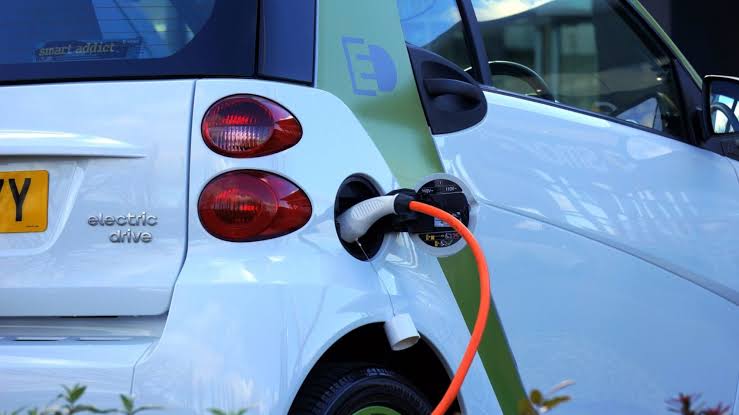Electric vehicles (EVs) are reshaping the global transportation industry, offering a cleaner and more sustainable alternative to traditional internal combustion engine vehicles. By 2025, the EV market has grown exponentially, driven by advancements in battery technology, government incentives, and the increasing urgency to reduce carbon emissions. As nations strive to meet climate goals, EVs have become central to discussions on the future of mobility.
The shift towards electric transportation is not just about replacing gasoline-powered vehicles but also transforming the way we think about energy use, infrastructure, and urban planning. With automakers, technology companies, and governments investing heavily in EV innovations, the future of transportation is undoubtedly electric.
Advances in Battery Technology
One of the biggest challenges for EV adoption has been battery performance and cost. By 2025, breakthroughs in solid-state batteries and other advanced technologies have significantly improved energy density, reduced charging times, and increased the driving range of electric vehicles.
These improvements have made EVs more accessible and practical for everyday use. Longer-lasting batteries also reduce the overall cost of ownership by requiring fewer replacements and offering better performance over time.
Charging Infrastructure Expansion
The expansion of charging infrastructure has been crucial in supporting the widespread adoption of EVs. Public charging stations, fast-charging networks, and home charging solutions have become more readily available in urban and rural areas alike.
Companies like Tesla, Shell, and other energy providers have invested in creating ultra-fast chargers capable of powering vehicles in minutes rather than hours. Governments have also partnered with private companies to ensure that charging networks are integrated into highways, workplaces, and residential areas.
Government Policies and Incentives
Government support continues to play a vital role in the future of electric vehicles. Incentives such as tax credits, subsidies, and reduced registration fees encourage consumers to choose EVs over traditional vehicles.
In addition, many countries have introduced strict regulations on carbon emissions and are planning to phase out the sale of new petrol and diesel vehicles within the next decade. These policies have accelerated the transition to cleaner transportation options.
Autonomous and Connected EVs
The future of transportation is not just electric but also autonomous and connected. EVs are increasingly being integrated with artificial intelligence and Internet of Things (IoT) technologies, enabling advanced driver-assistance systems and fully autonomous driving capabilities.
Connected EVs can communicate with other vehicles, traffic systems, and charging networks to optimize routes, reduce congestion, and enhance safety. This integration promises a more efficient and intelligent transportation ecosystem.
Environmental and Economic Benefits
Electric vehicles play a key role in reducing greenhouse gas emissions and improving air quality in urban areas. Unlike traditional vehicles, EVs produce zero tailpipe emissions, which helps combat climate change and reduces dependence on fossil fuels.
Economically, the rise of EVs creates new job opportunities in battery manufacturing, renewable energy, and charging infrastructure development. It also reduces long-term fuel and maintenance costs for consumers.
Challenges and Future Solutions
Despite their rapid growth, EVs still face challenges such as the high initial cost of vehicles, limited charging availability in remote areas, and concerns about the environmental impact of battery production and disposal.
To address these issues, companies are working on recycling initiatives for EV batteries, exploring alternative materials for battery production, and improving manufacturing efficiency. As these solutions mature, EVs will become even more sustainable and affordable.
The Role of Renewable Energy
The future of EVs is closely tied to renewable energy. Charging electric vehicles with clean energy from solar, wind, or hydroelectric sources maximizes their environmental benefits. By 2025, many EV charging stations are being powered by renewable energy systems, creating a fully sustainable energy cycle.
Vehicle-to-grid (V2G) technology is also gaining traction, allowing EVs to store excess renewable energy and feed it back into the grid during peak demand periods. This technology not only supports the energy sector but also offers cost-saving opportunities for EV owners.
Global Adoption and Market Trends
Countries such as China, the United States, and members of the European Union are leading the charge in EV adoption. Global automakers like Tesla, BYD, Volkswagen, and Toyota are expanding their EV lineups to cater to various consumer needs, from affordable compact cars to luxury electric SUVs and trucks.
The growing competition in the EV market has driven down prices, making electric vehicles accessible to a broader audience. By 2030, it is expected that EVs will account for a significant percentage of all new vehicle sales worldwide.
Conclusion
The future of electric vehicles in transportation is bright, with continuous advancements in technology, infrastructure, and sustainability driving widespread adoption. By 2025 and beyond, EVs are set to become the standard for personal and commercial transportation, reshaping industries and contributing to a cleaner, greener planet.
As challenges like cost and battery disposal are addressed, electric vehicles will continue to evolve, creating a transportation ecosystem that is efficient, connected, and environmentally responsible.




Leading countries like China, the US, and the EU, along with major automakers such as Tesla, BYD, Volkswagen, and Toyota, are accelerating global electric vehicle (EV) adoption by expanding diverse, affordable EV options.
Interesting read